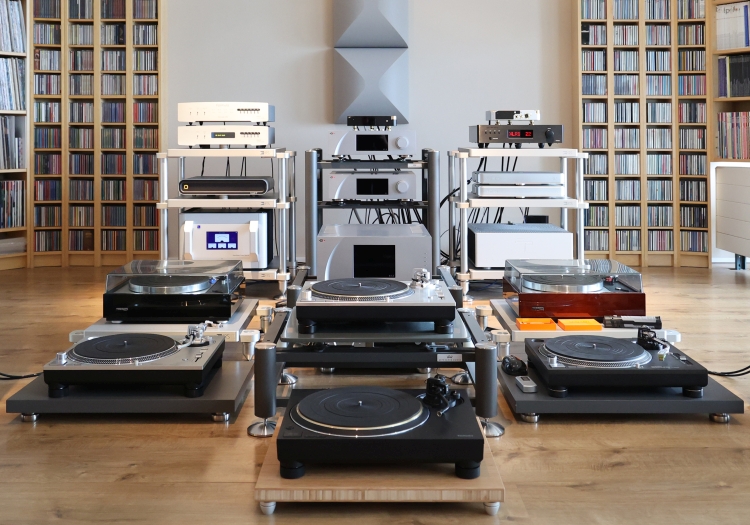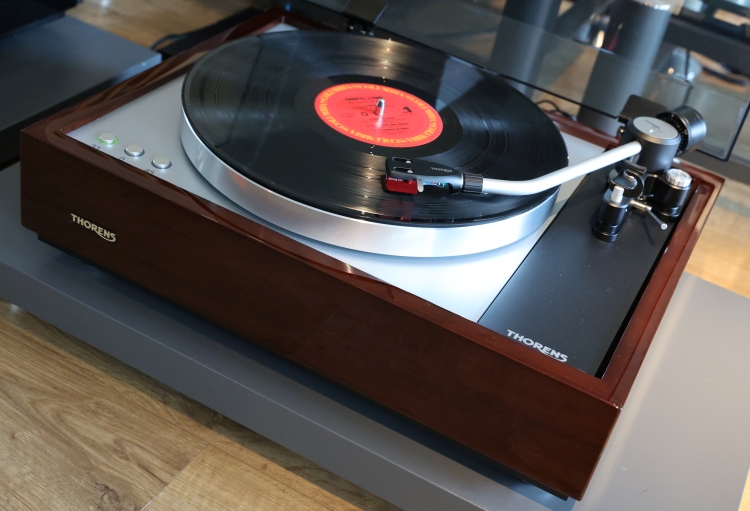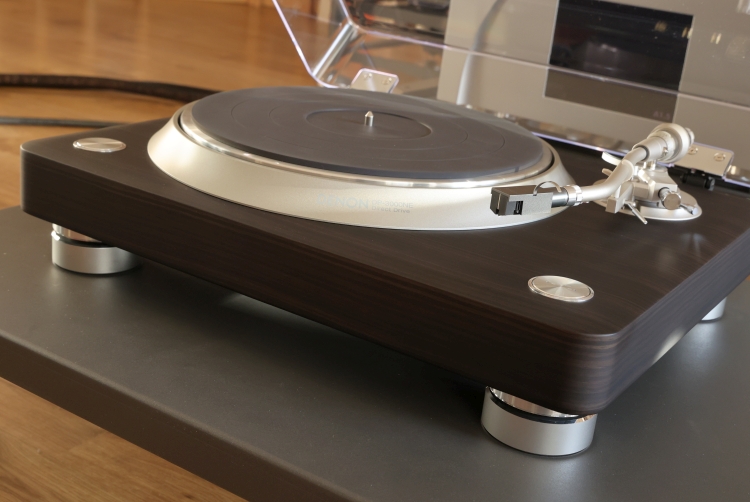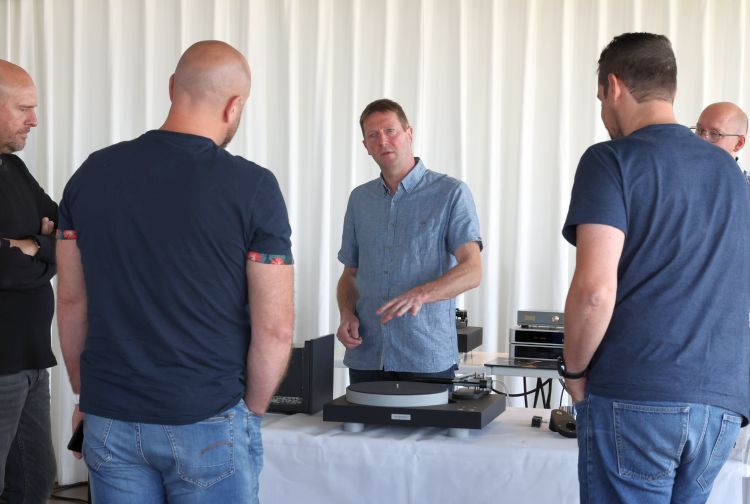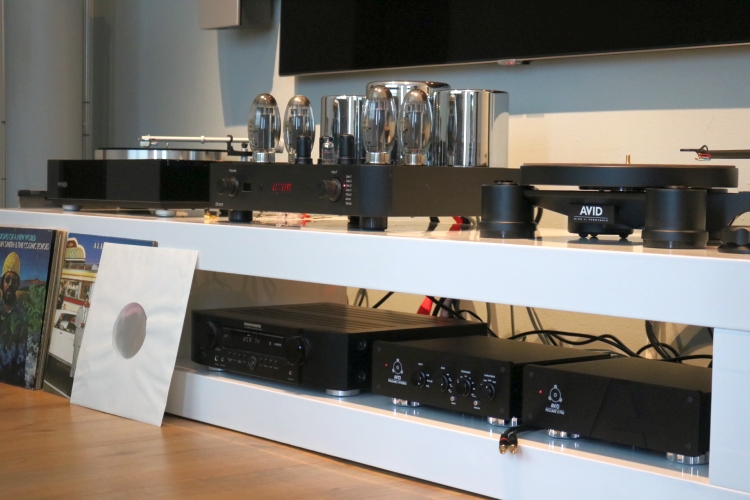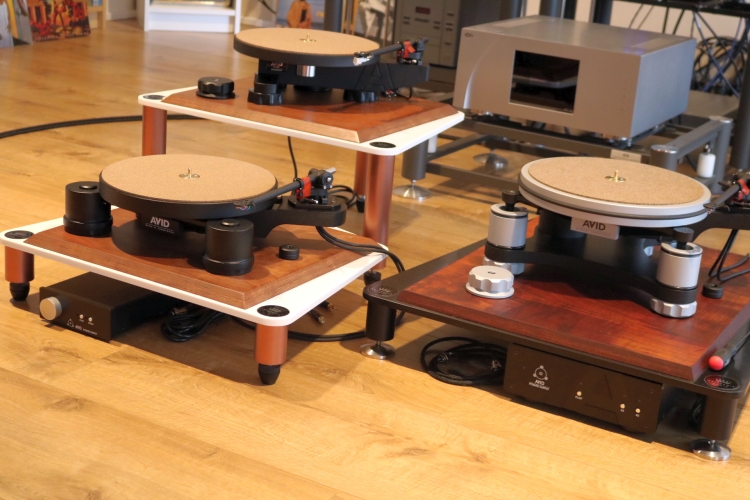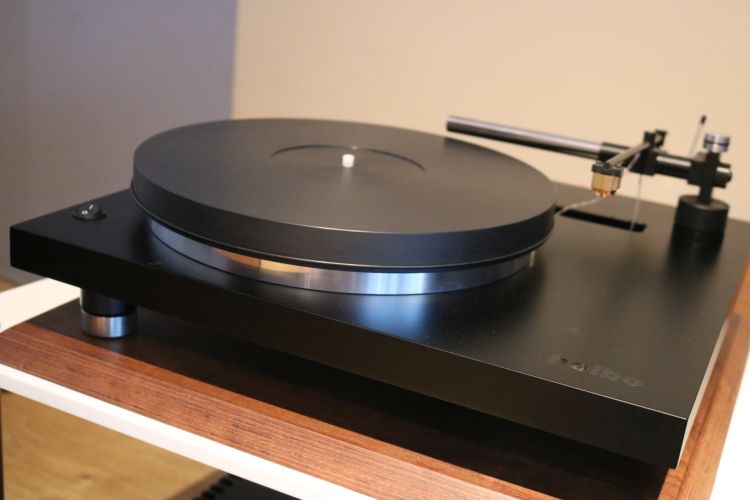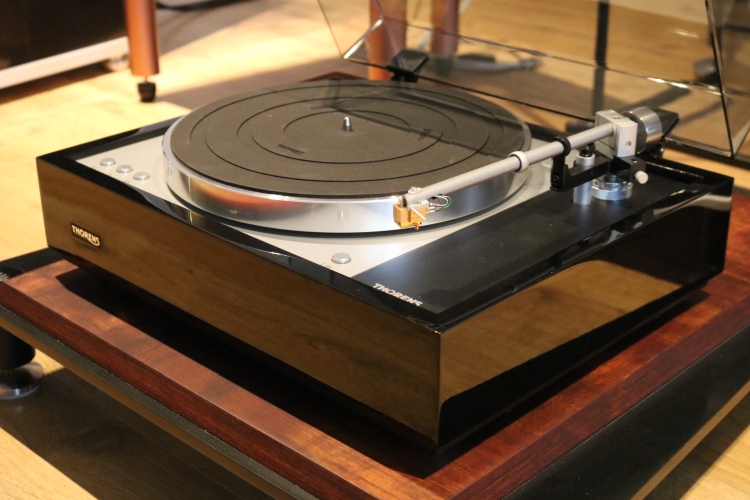Bergmann Magne Air-Bearing turntable with DS Audio DS W3 Optical Cartridge
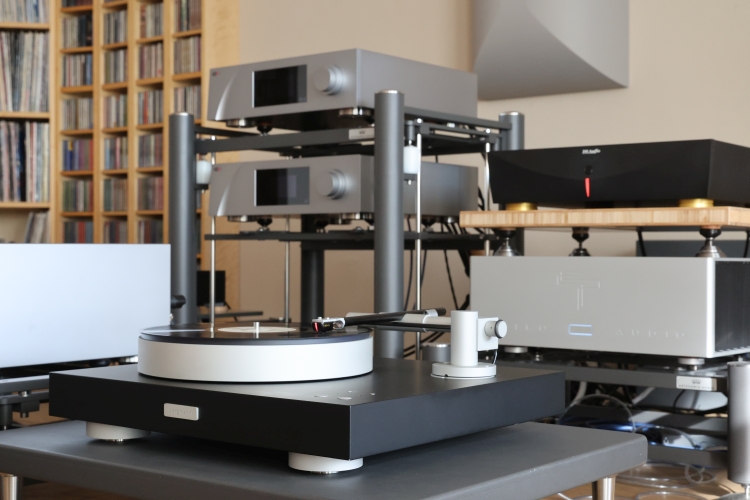
First Use
It’s fascinating to start the Magne’s heavy platter for the first time. At rest, it sits on a metal plate and cannot be rotated. Then, switch on the pump, and nothing seems to change – until you try to rotate the platter and find it can spin freely.
The arm lift works differently from most other lifts, with a large rotary knob, and in a direct, undamped manner. After a minuscule adjustment period, this works superbly well, allowing the user to dictate precisely how slow or how fast the needle should drop. The process is so controllable and repeatedly accurate that I wonder why no other manufacturers have incorporated something this simple yet clever.
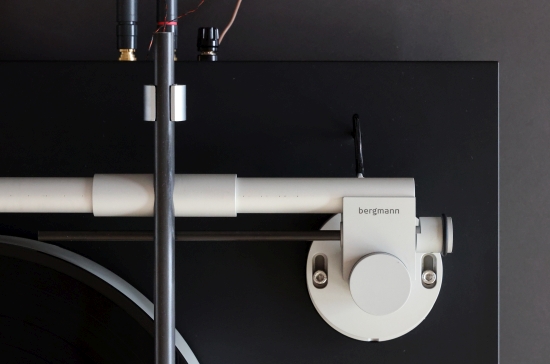
A high-precision Tacho-feedback controlled DC motor drives the aluminum sub-platter via a belt underneath it. Due to its weight, it takes a little time for the platter to come on speed, but when it has reached the desired speed (331/3 or 45), it is super-stable. During all my testing, I did not hear the slightest hint of speed variation. I am very sensitive to speed variations, and if I cannot hear them, that is a good thing. For those who like a more scientific approach, I also measured the speed stability using the admittedly not-very-scientific, but so far rather seemingly very trustworthy RPM iPhone app. The Magne ends up there with stability on par with the AVIDHIFI Sequel SP, Thorens TD-1601, and Denon DP-3000NE, to name three players with very different drive mechanisms.
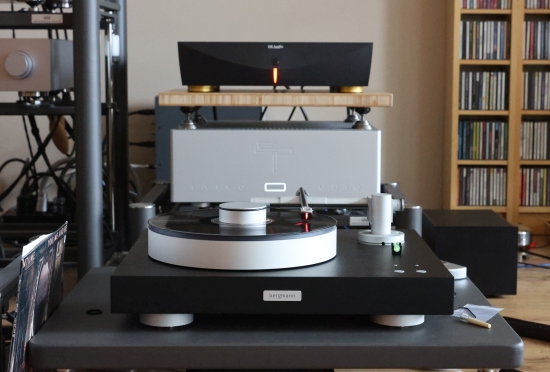
System Context
The turntable will be reviewed in the context of my main system, which consists of a CH Precision L1 preamp, A1.5 power amp, Lejonklou Entity Phono Stage, and Magico S1 MkII speakers.
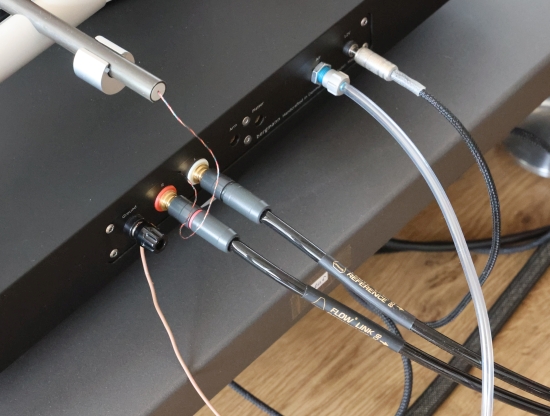
The interlinks between the Bergmann turntable and the DS Audio Equalizer, as well as to the CH L1 preamp are all the Driade Flow Link Reference 808
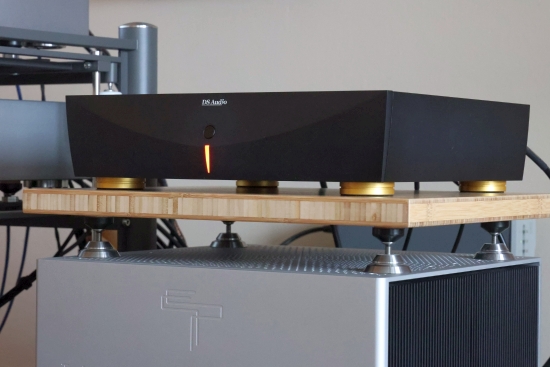
As this review took place during a change of my left- and right-most racks and the new racks had not yet been delivered, I placed the turntable on an Artesania Floor Platform and the DS Audio Equalizer on a Callas Audio Bamboo Soundboard resting on Artesania footers on top of the very solid and heavy Taiko Audio Extreme Music Server that itself was sitting atop an Artesania Aire platform.
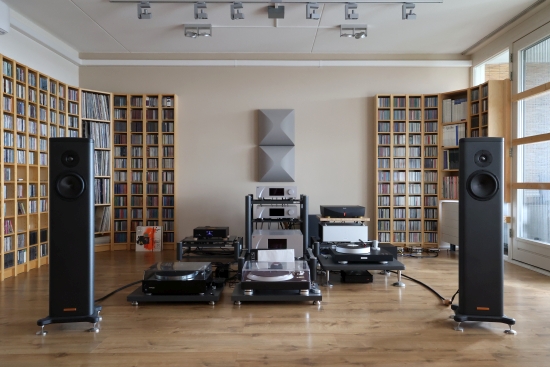
Listening
Given my earlier experience with the Holbo Air-Bearing turntable, I was expecting an ultra-precise, transparent, yet analytical and slightly lean sound. And, indeed, the sound was certainly ultra-precise and transparent. But not at all lean! In fact, the bass that this combination was able to produce truly surprised me. The Bergmann’s bass is understandably not quite as flabbergastingly earthy and robust as the AVIDHIFI Sequel, but neither the belt-driven Thorens TD1601 nor the Direct-Drive Denon DP-3000NE produced deeper or more solid bass. Even more amazingly, the sound was easily all the way up there on an audiophile level with the best turntable and cartridge combinations I have reviewed, regardless of the price. And for all its precision, there is not a hint of whiteness or clinicality. Instead, the combination produced a highly detailed and nuanced sound, combined with fabulous delicacy and effortless fluidity. Importantly, throughout the entire review period, and without exception, cueing was flawless, and tracking was superb.
With such a radical pick-up system, one might fear the loss of certain “magical” aspects of magnetic cartridges, even if they could strictly be regarded as detrimental to the sound, like bloom, warmth, or character. In practice, as soon as the first notes played from the very first record, that fear proved entirely ungrounded. Most striking was the realization that the timbre, or tone, was spot-on in its naturalness. Never was there a sense of artifice. Instead, the music poured out of the speakers in an ideal balance between neutrality and natural saturation. And of utmost importance to me personally, the combination never sounded warm to the point of being mellow or rose-tinted, but neither was it ever cool or cold or lacking humanity in any way. It’s amazing how the combo achieves this delicate balance. Evidently, the Bergmann is genius in its simplified complexity, and the DS Audio W3 stylus behaves just like a “regular” cartridge in every way.
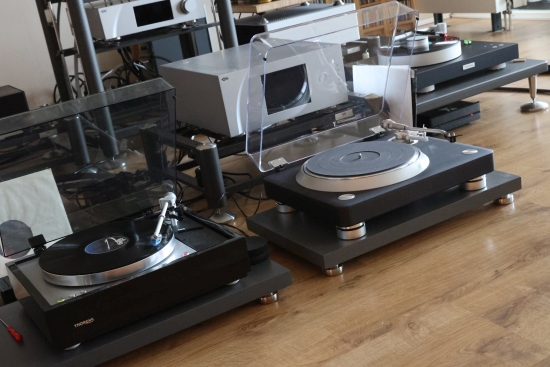
If any reservation can be raised, I feel the combination caters more to the discerning audiophile than the rock aficionado. Given earlier experience, I’m tempted to attribute this to the turntable more than the Cartridge system, but in all honesty, I cannot be sure as I have not made individual comparisons.
In any case, while the combo has perfect pacing, great incisiveness, precision, and delicious fluidity, and it sounds very far from “technical,” I do feel that the presentation is more introspective than visceral. The system has a great singing and gushing quality, and it is lyrical and capable of great dynamic impact, but sometimes, it feels more controlled than I like, and I found myself wishing for a higher jump factor. To put it another way, the combo is more Martin Logan than Klipsch, more Jeff Rowland than classic Krell, more dCS than classic Wadia. Or, to stick with analog, the Bergmann and DS combination is more typical belt-drive than typical direct drive or idler drive. Ultimately, we’re talking about personal preferences, not absolute quality, but this can be a deciding factor.
Let me return briefly to the Holbo Air-Bearing turntable since it made a similar impact on me in terms of precision and effortless fluidity, which I think are typical for Air-Bearing designs. With the Holbo, despite using a very expensive MC cartridge, there was a leanness to the sound that I do not hear with the Bergmann combination. Moreover, the Bergmann has all the Holbo’s qualities and adds to these a beefier, more solid, more realistic, and tonally more saturated delivery.
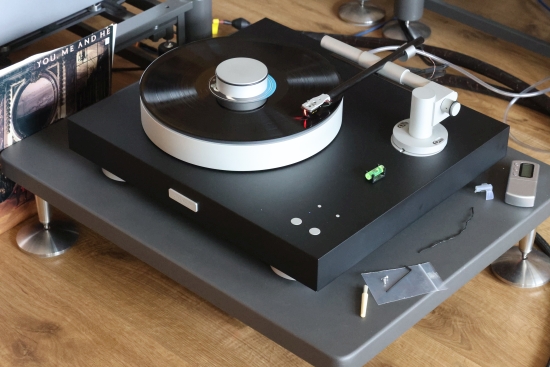
While I was making mental comparisons, it struck me that I was comparing the Bergmann/DS Audio combination in my mind with other top-shelf turntable-cartridge combinations that were all done using the CH Precision P1 phono preamp that I used until recently, before I simplified my analog setup to allow other investments. The impact of this should not be underestimated. As fine as the Lejonklou Entity phono stage is, the CH P1 sets such an impossibly high standard that it makes life extremely hard for any phono stage. Yet, with the Bergmann and DS Audio Equalizer, I consistently have this uncanny feeling of listening to the CH phono stage once again.
One might initially frown at the cost of a DS Audio system, in this case, 15.000 euros for the combo, excluding the turntable. But then consider that the CH P1 phono stage costs a whopping 31.000 euros all by itself, sans cartridge. The DS Audio W3 is half that, and you basically get a cartridge for free!
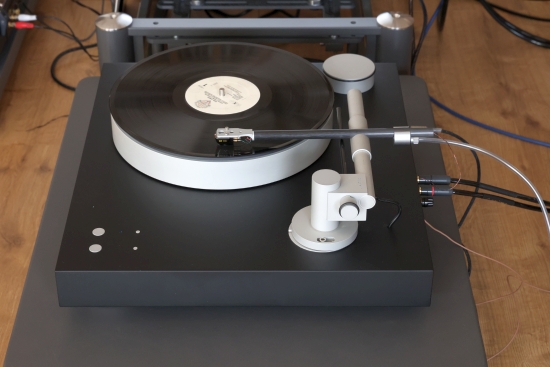
Records can be played with or without clamp but it does affect the sound. With it, the bass is fuller, and the overall sound is calmer and more sonorous; without it, the sound is slightly brighter and more expressive. Apply as desired.
As I played record after record, it was easy to become complacent with consistently perfect playback until I realized this was not to be taken for granted. It is not uncommon for turntables to be a little finicky in their operation, and one could certainly expect an air-bearing turntable with an air-bearing tonearm to be on a farther end of the finicky scale than more basic turntables. But nothing could be further from the truth. The Bergmann Magne and its tonearm work like an absolute dream: smooth, quiet, precise, and 100% trouble-free, every time, all the time.
After the initial setup, which of course, needs to be done very accurately to prevent the arm from verging from perfect equilibrium, there is surprisingly little to tweak for such a seemingly complex turntable and pickup system, which I feel is an enormously strong argument in favor of the system. The Bergmann is genius in its simplicity and stability, while the DS Audio system has clearly allowed for an ideal implementation of cartridge and EQ without the user needing endless cartridge tweaking facilities. That’s a big upside of having a single company design a cartridge and phono Equalizer: they are made for each other!
This review focused on this particular combination, which admittedly works superbly synergistically. Curious minds will wonder how the Cartridge or Turntable would perform on their own. But although I have not exchanged cartridges, the result clearly speaks for itself. I think I can safely conclude that the DS Audio system and the Bergmann turntable also perform superbly well individually.
Conclusion
Forget about complex setup or operation, and don’t worry about the intricacies of DS Audio’s Optical system, for this combination is silent, works utterly dependably, and produces pure, delicate, well-textured, and timbrally highly realistic music on an audiophile level that belies its price tag.
External Links
Bergmann Audio
DS Audio
Distributor for the Benelux: Mafico
